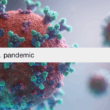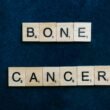
The rectum is part of the digestive system and is the last few inches of the large intestine. Moreover, it is also considered as the temporary storage site for store before its elimination via the digestive system. Rectal cancer is the term that is specific for the cancer that originates from the rectum area and end of the large intestine.
It is the third most common type of cancer worldwide and is the second leading cause of cancer-related mortalities. It is predominant in individuals who are older than 50 years. Moreover, age, family history, lifestyle changes, eating habits, and sedentary lifestyles are the major risk factors for rectal cancer. The treatment options are limited and effective in the early detection of rectal cancer.
Factors that contribute to the decline in Rectal Cancer death rate
American Cancer Society revealed that the number of the death rate due to rectal cancer is declining according to the latest statistics for 2024. Here are the several factors that are the major contributors to the decline in mortality rate.
Lifestyle changes
Adopting a healthy lifestyle with a balanced diet and regular physical activity is necessary to reduce the risk of colorectal cancer in elderly individuals. You have to engage in regular physical activity, including jogging, brisk walking, swimming, and cardio exercises for more than 60 minutes, to reduce the risk of developing rectal cancers.
In addition, complete cessation of smoking is also a comprehensive approach to reducing the free radicals in the body. Binge eating and obesity are the major risk factors for certain diseases, and it is necessary to control your diet and maintain your weight according to BMI standards.
You should also adhere to the regular screening methods if you see any signs and symptoms in your body for early detection of rectal cancer. Treat the chronic diseases that exist side by side, including irritable bowel syndrome and diabetes, which also increase the severity of colorectal cancer and lead to an increase in death rate.
Nutritional management
Eating habits and dietary preferences leave a long-lasting impact on your health. Different studies show a strong correlation between diet and the development of rectal cancer. Mediterranean diet significantly reduces the risk of rectal cancer and death rate by reducing the free radical production and oxidative stress in the body.
Consume a fiber-rich diet, including whole grains, fruits, vegetables, legumes, seeds, and nuts. Limit the consumption of processed and packaged food commodities. It is better to select lean and low-fat portions of meat and avoid consuming red meat. Choose healthy fat options from nuts, seeds, and olive oil to reduce inflammation. Limit the intake of saturated fat and trans fats by up to 10% on a daily basis.
You should avoid sugary drinks, snacks, and beverages to decrease the cancer risk. Add nutraceuticals, functional foods, and multivitamins to your diet to adopt a healthy lifestyle.
Quick access to healthcare facilities
People nowadays have quick access to healthcare facilities, which helps to ensure the early detection and treatment of diseases. Early detection and treatment decrease the mortality risk and improve the quality of life of the affected individual.
The improvement in healthcare facilities improves the rectal cancer treatment protocol, which directly reduces the mortality rate. Healthcare practitioners diagnose the disease at an early stage and ensure its treatment before the onset of severe symptoms that are irreversible. People have quick access to hospitals, diagnostic departments, and treatment facilities.
Awareness among people
Awareness among people helps to reduce the development of advanced-stage cancer, which ultimately leads to death. The main purpose of public health and door-to-door campaigns is to raise awareness among people.
Public health campaigns increase screening participation, promote healthy lifestyles, ensure quick access to healthcare facilities, and detect early signs and symptoms of certain diseases to reduce their incidence.
Collaboration of multidisciplinary health care team
Most cancer departments nowadays rely on a multidisciplinary approach to move towards a better conclusion when designing treatment for the affected person. Collaboration among dieticians, nurses, medical oncologists, and healthcare professionals leads to the generation of comprehensive treatment plans to ensure optimal health outcomes for patients.
They design targeted therapies for patients at advanced stages of cancer and improve the quality of life. Moreover, they also ensure timely, evidence-based, and accurate treatment plans.
Better screening programs
It is necessary to understand the pathology of rectal cancer before going towards the treatment plans. It is the abnormal and uncontrollable growth of the colon and rectum cells that form tumors, which are benign or malignant.
Colonoscopy is the gold standard for the diagnosis of colorectal cancer. The medical specialist also removes the polyps during the procedure, and it is recommended for individuals of 45 years.
Several people prefer the less invasive option, sigmoidoscopy, which detects the polyps and early stage of cancer in the rectum. Several non-invasive stool-based tests are also designed to check the presence of abnormal DNA or hidden blood, which shows the presence of polyps.
Stool-based tests include Fecal Immunochemical tests and stool DNA tests. CT scans of the colon or colonography are also helpful parameters in diagnosing polyp formation. All of these latest screening techniques diagnose the cancer at an early stage and decrease the death rate worldwide.
Concise treatment methods
Concise and targeted treatment methods also increase the survival of people with colorectal cancer and reduce the risks of mortality. Medical oncologists design the targeted treatment plans according to the stage of the cancer and the presence of the lesions.
In addition, targeted therapies, along with minimally invasive and non-invasive techniques, also help to cure the disease at its early stages. Chemoradiation and chemotherapy targeted with surgery are the best and targeted treatment plans for individuals with low disease risk.
Targeted therapies also include oral drugs that specifically act on the protein molecules present in cancer cells. These drugs retard the growth of protein molecules because they send signals for the growth and multiplication of cells.
Epidemiological Statistics of Rectal cancer death rates in different regions
Statistics for the decline in the death rate due to rectal cancer can vary according to different geographical areas and the eating preferences of people.
Mediterranean people are generally less vulnerable because of their food guide pyramid, which includes a major portion of food from fruits, vegetables, and whole grains, which are rich in fiber.
However, the overall death rate has decreased by around 2% from 2010 to 2022 because of improvements in screening techniques and treatment plans.
In the United States and Canada, the risk of death by rectal cancer decreased to 15% and 9%, respectively, in 2020. Moreover, in Latin America, including Chile, it has decreased by up to 18%.
The death rate of rectal cancer varies in Asian countries because of the differences in health care facilities, awareness programs, public health campaigns, lifestyle, and genetic predisposition.
Developed Asian countries, including Japan and South Korea, generally record fewer deaths per year as compared to developing and underdeveloped Asian countries.
South Africa has also developed the latest strategies and recorded a 10% decline in the death rate in previous decades.
What is the life expectancy of someone with rectal cancer?
Life expectancy is basically the tool that is used to diagnose the survival rate of affected individuals after 5 years. The life expectancy or survival rate also varies according to the stage of the cancer and the immunity of the individual.
American Cancer Society relies on the Epidemiology, Surveillance, and End-results database to track the survival rate of individuals with rectal cancer in the next five years.
The survival rate at localized, regional, and distant, and all SEER stages combined is 90%, 74%,17%, and 68%, respectively.
The latest statistics show that for every 65 patients, over 100 diagnosed with rectal cancer survive better in the next five years.
However, you can also increase the survival rate of the affected patient by providing the targeted treatment plants and dietary interventions and reducing the environmental impacts.
Furthermore, a multidisciplinary treatment approach, adherence to surveillance guidelines, advanced treatment modalities, emotional and social support, and management of long-term risk factors are the primary approaches to increasing rectal cancer survival rates.
What is the success rate of radiation for rectal cancer?
Radiation therapy is a non-invasive technique for the treatment of rectal cancer. It is the external beam radiation therapy in which a highly focused beam of radiation is bombarded on the tumor cell area to break the protein molecule.
The success rate for radiation treatment is high because it reduces the chances of the regrowth of cancerous cells in the pelvis after a surgical procedure.
The disease-free survival rate by this technique is about 92%. Several studies revealed that the success rate for local recurrence-free survival is 72% to 74% if the patient is treated with radiation technology before surgical procedures.
Radiation also increases life expectancy, and ranges from 80% to 95% depending on different factors, primarily the stage of cancer.



